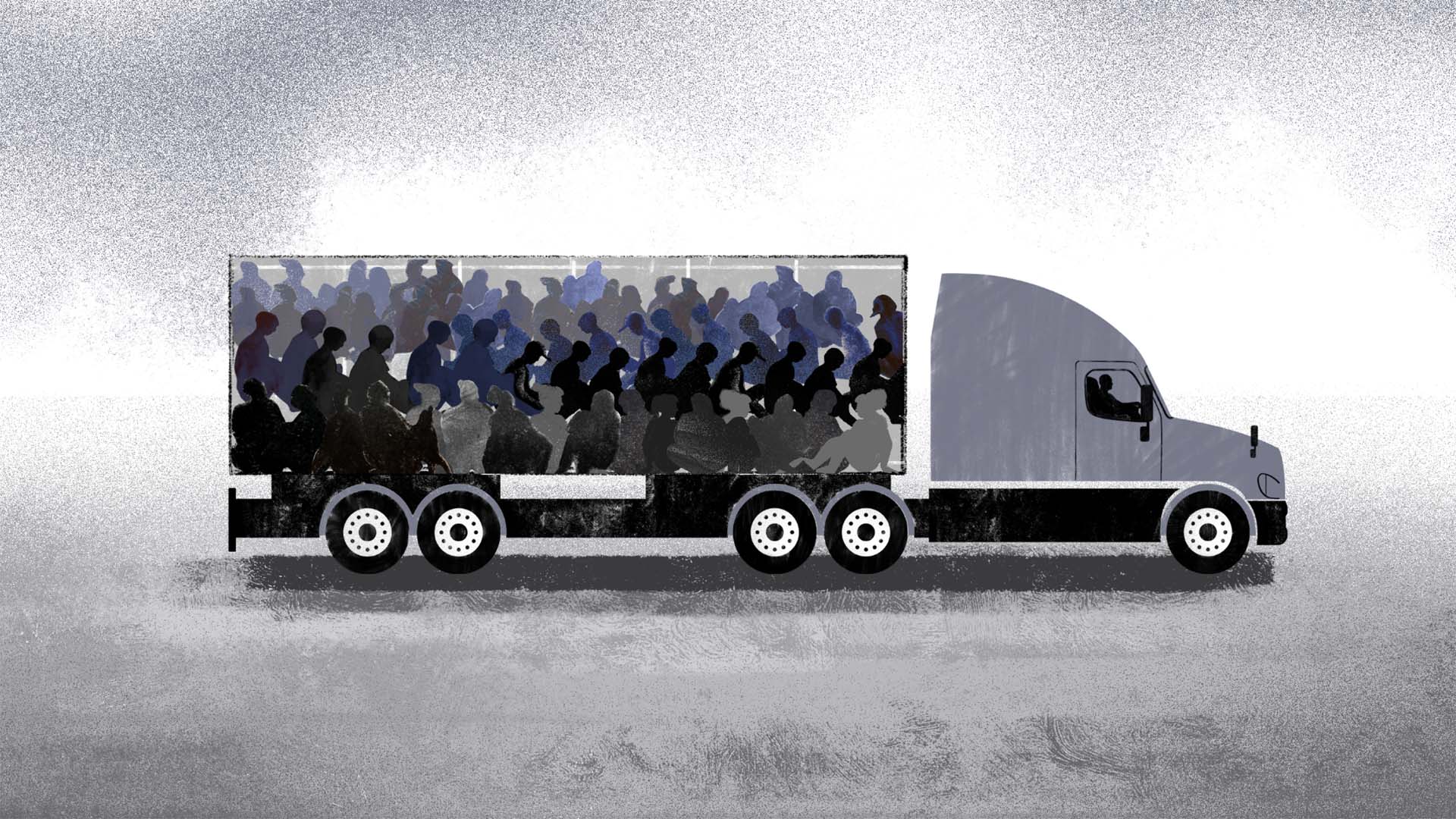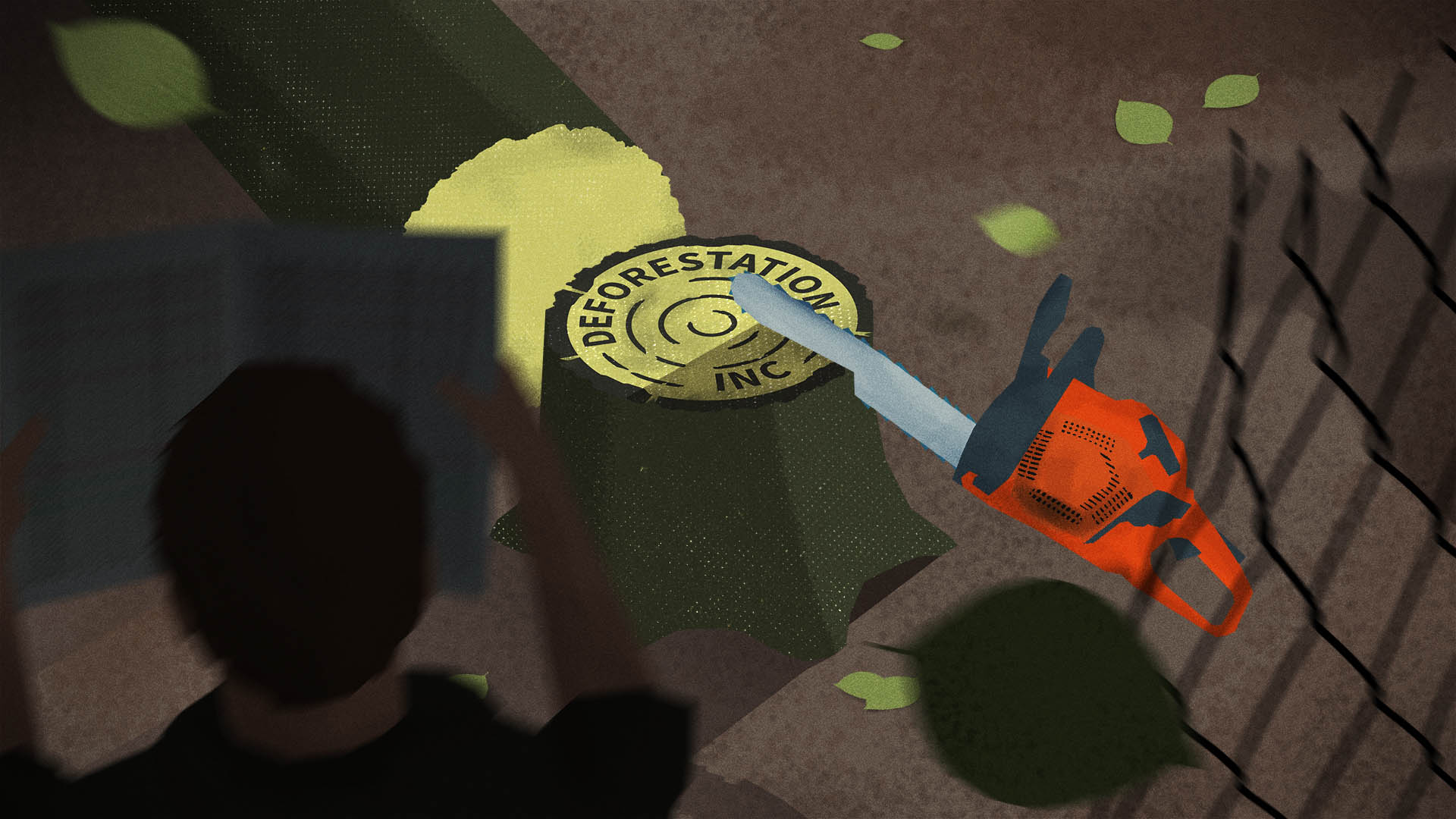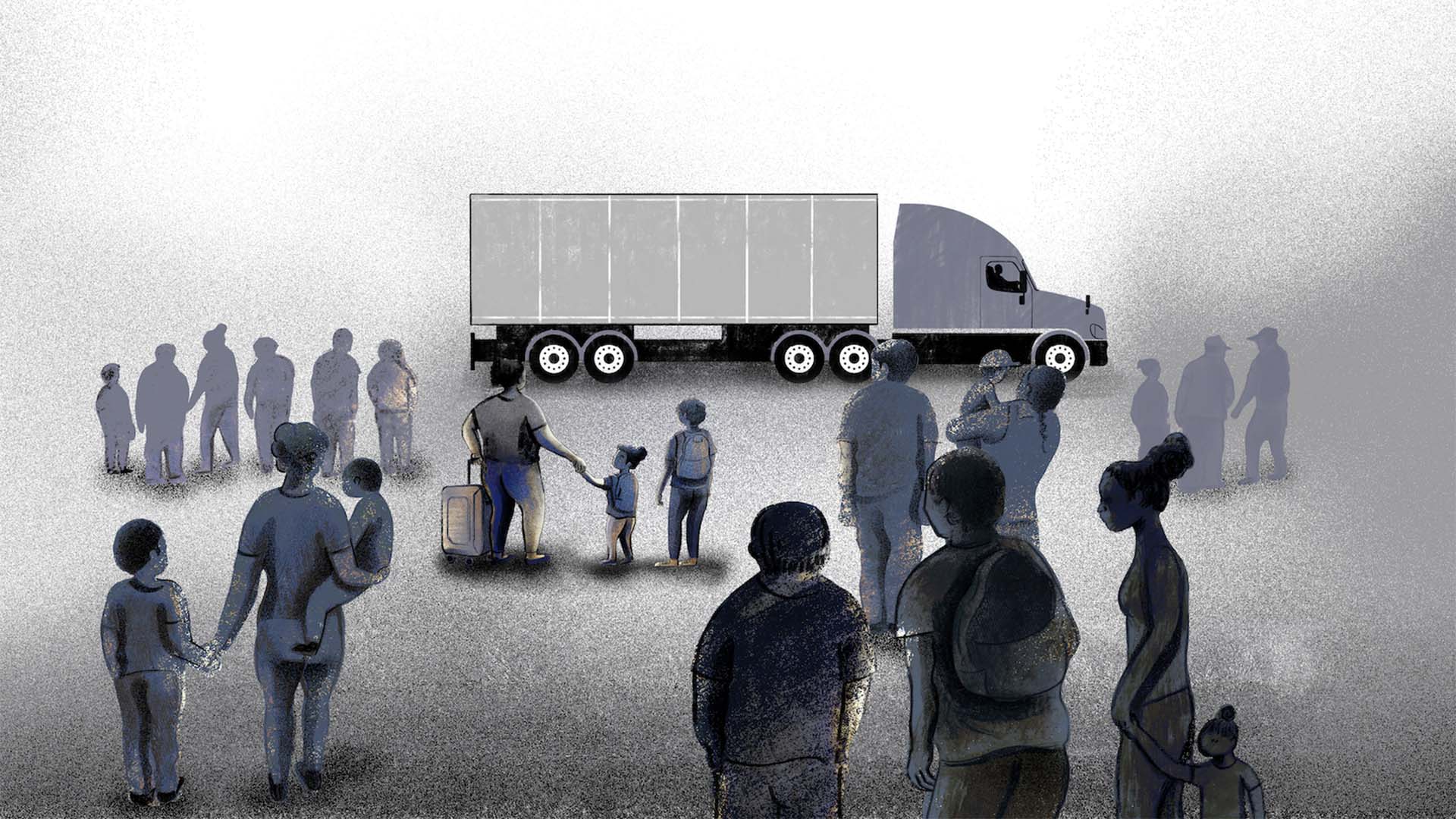
Six days before Rafelín Martínez Castillo was sent flying from a trailer truck transporting him and 168 other migrants across Mexico, he was sanding wood in his cousin’s modest workshop in the Dominican Republic. The 31-year-old craftsman, his brother and cousin were working tirelessly to fulfill a large order of pilones, the popular mortar and pestle sets sold in souvenir stores and on roadsides in the Caribbean nation.
“When I touched his hands the day we said goodbye, they were full of calluses and cuts from all the hours he spent sanding wood,” Martínez Castillo’s mother, Kenia Castillo, recalled during an interview in April 2023 at her house in Boqueron, a small, hilly region in the southern province of Azua. “I pleaded with him not to leave. I said we could get by eating rice and eggs if we had to. But he told me that just making pilones, we would never have anything.”
The family used money from their pilones sales to pay part of the $26,000 to smugglers who had agreed to get Martínez Castillo to the United States. The trip would take him on a plane to Panama, then Guatemala, and from there he would cross the border into Chiapas, Mexico’s southernmost state.
In recent years, tens of thousands of Dominicans have followed similar routes to reach the U.S. in an exodus that has become so ubiquitous it has turned into a popular culture reference, with the phrase “la vuelta es México” (“Mexico is the way”) showing up in rap and merengue songs and comedy sketches on national television. Generally, Dominicans have been flying to South and Central American countries with relaxed or no visa requirements. In 2022 and 2023, more than 3,000 people per month left the island on such flights, according to U.S. Customs and Border Protection data. The travel becomes much harder from there as they then make their way across several countries to arrive in Mexico; from Mexico they walk to the U.S.
Martínez Castillo’s journey was supposed to culminate with him crossing into the United States. Instead, 25 days after leaving home, he returned in a casket.

On Dec. 9, 2021, the 18-wheeler that had Martínez Castillo and his fellow migrants packed in like commodities overturned while speeding on a Chiapas highway. Fifty-six people died and 113 were wounded. The images of the bodies scattered across the highway surrounded by horrified onlookers spread around the globe.
Following the trail of this and similar accidents involving migrants and trucks, a cross-border team of journalists found that the illegal use of these cargo vehicles to move migrants across Mexico has increased in the past several years as cartels have taken over the smuggling business, which has historically been controlled by a loose network of smugglers called coyotes or polleros. All of this has unfolded as the Mexican government, pressured by the United States, has toughened its policies to limit the record number of people crossing its territory in recent years, pushing migrants to find dangerous and often deadly ways to travel. As they make use of the cargo industry, which is supposed to be tightly regulated by government agencies, organized crime groups seem to operate with impunity. Today, the smuggling business is estimated to generate billions of dollars a year for the cartels.
It also “has an enormous logistics apparatus and, of course, all the necessary complicities behind it,” said Tonatiuh Guillén López, who was appointed Mexico’s immigration chief in December 2018 and resigned six months later over disagreement with the shifting immigration policies of president Andres Manuel López Obrador. “Otherwise, how do … dozens of trucks travel undetected through the country?”
Neither Mexico’s National Institute of Migration, its attorney general, the Secretariat of Defense, the National Guard and the National Chamber of Cargo Transportation, which represents the trucking industry, would comment or consent to interviews for this story.
The team of reporters interviewed survivors, experts, migrants’ rights advocates and current and former Mexican officials, and reviewed thousands of pages of documents for this story. The reporters also created a database listing more than 170 trucks that carried migrants and were inspected, detained, involved in accidents or abandoned from 2018 to 2023. Due to the varying quality of the information, and because Mexican authorities have tracked cases only since 2022, after the Chiapas accident, the data reveals only a tiny portion of this human smuggling. But what it does show is that nearly 19,000 people — including more than 3,200 minors — were traveling in the trucks the reporters identified.
This article is part of “Cargo trucks: a trap for migrants,” a reporting collaboration led by Noticias Telemundo and the Latin American Center for Investigative Journalism (CLIP), with the International Consortium of Investigative Journalists and Bellingcat.
Pie de Página, Chiapas Paralelo and En un 2x3 Tamaulipas reported in Mexico, Plaza Pública in Guatemala and Contracorriente in Honduras.
The data also shows that at least 111 migrants traveling in trailers through Mexico in those six years died because of exposure to heat or lack of oxygen, or as a result of traffic accidents. On March 7, 2019, a trailer carrying about 80 migrants drove off the road and overturned in Chiapas, causing the deaths of 23 people, among them a 2-year-old and a 7-year-old. Three years later, 64 people were rescued from a trailer abandoned on the side of the road in the northern state of Coahuila. They had been traveling without water or ventilation and endured temperatures of 104 degrees Fahrenheit inside the trailer, authorities said. Fourteen people were hospitalized, and a Nicaraguan woman died and had a stillbirth.
On Sept. 28, 2023, two migrants died and 27 were injured after the driver of a truck carrying 52 people lost control and the truck overturned on a highway in Mezcalapa, Chiapas. Three days later, nine Cuban women and a girl died and 17 other Cubans were injured after the truck carrying them crashed on a highway about 100 miles from the Guatemalan border.
The situation of displaced people is so grave that they take all these risks.
— Tonatiuh Guillén López, Mexico’s former immigration chief
Given the volume of people passing through Mexico — U.S. Customs and Border Protection data shows that more than 4.8 million foreign nationals were encountered at the southern border in the last two years alone — the number of migrants in trucks is undoubtedly higher than the reporters’ data analysis shows, according to experts and advocates for migrants’ rights.

Guillén, the former immigration chief, said that while many migrants are misled by smugglers about the mode of transportation, others do understand the dangers of being locked for hours in a rolling steel container.
“The situation of displaced people is so grave that they take all these risks,” Guillén said. He has a phrase to describe the despair and lack of options faced by migrants in Mexico and around the world. He calls it “the magnitude of hopelessness.”
A ‘humane’ immigration policy?
Large numbers of Central Americans have been passing through Mexico to reach the U.S. since at least the 1980s, fleeing civil wars or attracted by American companies’ demand for cheap labor. That migration continued in the late 1990s, when thousands left their countries after the devastation caused by Hurricane Mitch in 1998. Other waves followed, driven by economic crises, climate change, violence and political upheaval. Around 2010 a new trend emerged: Thousands of Asian and African migrants arrived in the south of Mexico after traversing the Americas en route to the U.S.
To contain the flow, the U.S. and Mexico have beefed up the presence of law enforcement at their borders. With funding from the U.S., Mexico increased deportations, sending hundreds of thousands of people back to their countries and even deporting more than the United States has in particular years.
Mexico became what experts call “a vertical border,” explained Gretchen Kuhner, director of the Institute for Women in Migration, a nonprofit advocacy group. This means that immigration inspections aren’t happening only at entry points at borders, airports and seaports, Kuhner said. Instead, stops and searches can happen anywhere. Soldiers and immigration agents began stopping people in parks and other public areas as far back as nearly 10 years ago, boarding buses and pulling over vehicles to catch undocumented migrants. (In 2022 the Mexican Supreme Court declared this practice unconstitutional after three Indigenous siblings who were racially profiled sued, but that hasn’t stopped the practice.)
“This way of doing immigration control is, from our perspective, one of the factors that pushes people to travel in a clandestine way and what allows organized crime groups that traffic people to flourish,” Kuhner said, because they offer a way to dodge the random stops and searches.
Poor migrants who can’t pay smugglers or hire fixers to bribe authorities for expedited documents to move legally across Mexico have traditionally attempted the journey walking or hitchhiking. Many more risk injury or death by climbing atop the moving freight train nicknamed “The Beast” and the “Death Train,” part of a railway network that runs the length of Mexico. Seeking safety in numbers, thousands of people a year travel together on foot for hundreds of miles in so-called migrant caravans. Others, like Martínez Castillo, the Dominican woodworker, and the nearly 19,000 identified in the data analysis, end up crammed in the trailer trucks.
For a brief period at the beginning of his presidency in 2018, Andrés Manuel López Obrador, a center-left liberal, followed his campaign promises to forge a more “humane” immigration policy than the one he had inherited. His administration granted thousands of humanitarian visas to allow migrants safe passage or work visas to stay in Mexico. During that period, a caravan was able to cross the country largely unimpeded. But he soon reversed course under pressure from the Trump administration that threatened to increase tariffs on Mexican imports.
In the summer of 2019, López Obrador deployed nearly 21,000 agents from the National Guard, a security force he created, to Mexico’s borders with Guatemala and the U.S. to contain migrants. Later, Mexico also largely stopped issuing safe-passage documents to migrants. Notably, the government prohibited transportation companies from selling bus tickets to anyone who couldn’t show a valid immigration document allowing them to be in the country. Advocates point to that policy — which prevents people from traveling in a safer way — as one of the chief reasons that pushed migrants to seek dangerous alternatives to traverse Mexico. In October, a Mexican federal court declared the practice of asking for immigration documents illegal and discriminatory.
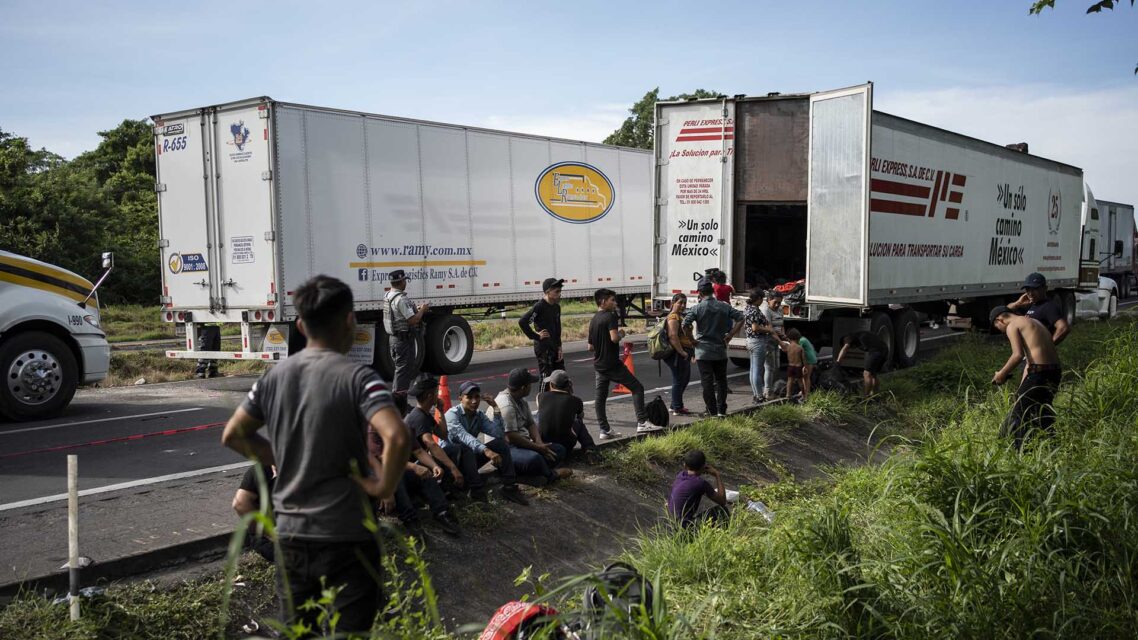
‘Children, babies and entire families’
In Mexico — an export-oriented economy that has overtaken China as the United States’ top supplier — cargo trucks play a key role in keeping businesses running. The number of cargo trucks traveling annually on Mexican roads surpassed 600,000 in 2021.
A reporter from En un 2×3 Tamaulipas who contributed to this story spent more than six weeks approaching companies and individuals who work in the trucking industry in the hopes of finding drivers who had carried migrants in trucks. Only one driver agreed to talk – on the condition that his identity be protected out of fear of retribution. The man, who has driven trucks loaded with migrants, said that drivers don’t necessarily seek out this kind of work. Instead, they are recruited at freight stations by those who work for cartels. Refusing the job can mean death, he said.
“They arrive and tell you: ‘I need you to take this trip for me,’” he said. “Everything is already arranged.”
He said migrants who manage to reach Mexico City, in the center of the country, from the south are approached at bus terminals by coyotes who offer them safe transportation to the U.S.-Mexico border. Migrants who find a way to get to Michoacan, a few hours west of Mexico City, pay to board the trailer trucks. From there, they are driven hundreds of miles to towns near the border with Texas, such as Reynosa or Matamoros.
The driver, who has been transporting produce from Michoacan to other parts of the country since 2013, said he has driven up to 100 people at a time in trailers, in trips that last 15 hours — carrying “children, babies and entire families.” Drivers are prohibited from stopping along the way to check on migrants’ conditions, he said.
In 2022, he said, he was approached by a man who told him that he was going to drive a group of Central American migrants to northern Mexico. He was going to be paid for it, but he also understood it wasn’t an offer he could turn down. “They threaten your family,” the driver said. “I can’t even imagine how big their reach is, but when they come and offer you the gig they tell you, ‘Look, if you refuse or if you betray me, we know that your family lives in such and such area.’”
He said he’s given a phone to receive instructions during the trip. He is stopped at checkpoints by either the Army or the National Guard. He’s usually instructed to explain to the soldiers that he is carrying people. Then he is supposed to hand over the phone. “They communicate with each other, arrange their transactions, and that’s it,” the driver said. “Then [the soldiers] tell you, ‘You can go through.’”
The Mexican Secretariat of Defense also declined to comment on the testimony of the driver, claiming it has no jurisdiction in immigration matters. Drivers may be offered between $4,800 and $6,000 (80,000 to 100,000 Mexican pesos) for each trip or “package delivered,” the driver said, but they usually get less than half the payment in the end. “It is not negotiable,” he said.
However harrowing it is to be recruited to drive migrants in a truck, the experience can’t begin to compare to what it’s like being a passenger. In January 2019, Yanira Chávez traveled for four days inside a trailer truck with her young son and daughter and about 170 others.
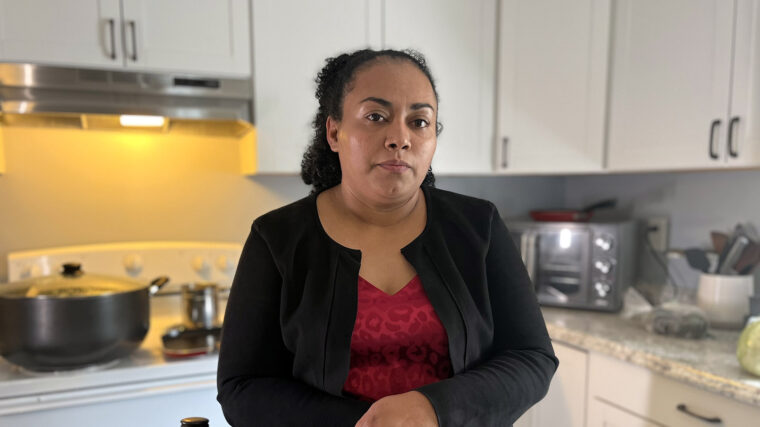
Four days into the new year, Chávez, now 36, and her children left their small town in northern Honduras. She had paid the first $5,000 to a local coyote who for $10,000 promised to take them to the United States, where Chávez’s husband was waiting for them. The coyote told them that once in Mexico, they were going to travel to the northern region by plane and instructed them to buy “luggage with wheels” to appear as tourists, not migrants.
Chávez and her children traveled by bus from Honduras to northern Guatemala, and from there they crossed a river by boat into Mexico. “I’m a little bit closer to you,” she texted her husband at that point.
In Mexico, Chávez soon realized they would not be catching any plane. The smugglers took away her phone and the phones of the migrants she was traveling with, threw away their suitcases and forced them to get inside a huge trailer, she said. Chávez and others initially refused to get in. “But at that point, it no longer depends on whether you want to or not,” said Chávez. “You have to do it because if you don’t, the threat is that they will hand you over to the cartel.”
Inside the truck the heat was stifling, Chávez recalled. Men were sitting lined up one behind the other in the center. Women squatted against the walls, holding the children between their legs. Soon after the truck started moving, a boy, about 2 years old, began crying. “Either you keep him quiet or I keep him quiet,” one of the armed coyotes riding inside the trailer told the child’s mother, according to Chávez.
There were plastic buckets at each end of the trailer in which to urinate. The stench flooded the space, she said. “People were fainting.”
The migrants were taken out of the trailer three times during the 900 miles from Villahermosa to Reynosa, she said, in the state of Tamaulipas, near Texas. One of those times, Chávez said, they walked through the backwoods for several hours until nightfall to evade a police checkpoint.
The ordeal didn’t end once the trailer truck dropped them off. In Reynosa, Chávez and her children were held hostage, first in a motel and then in a house for more than a week, until her husband managed to wire a total of $14,000 in small transactions to have them released, she said. Kidnappings are commonplace for migrants in Mexico when smugglers know they have relatives in the U.S. awaiting them.
Nearly a month after she left Honduras, Chávez and her children crossed the Rio Grande and surrendered to the U.S. Border Patrol in McAllen, Texas, where they asked for asylum. Chávez says the case was recently closed, adding uncertainty to the family’s future, but for now they’re living a quiet life in Long Island, N.Y., where she works for a wood molding company. The bitter memories and guilt about what the children had to go through overwhelm her sometimes. It’s particularly hard, she said, when a trailer truck approaches her workplace to deliver materials.
‘A perfect cycle of impunity’
Neither the victims of the smuggling business nor their surviving relatives often see justice, the reporting shows. From 2016 to 2023 there have been only 35 convictions for human trafficking in Mexican district courts, according to information obtained through a public records request to the Mexican Justice Department. Reporters compared the information from the Justice Department with the database created for this story. The analysis showed that some of the Mexican states where trucks smuggling migrants are most frequently detected — and where the most deaths are recorded annually — also have the fewest investigations into human trafficking open. In the state of Veracruz, the nation’s Attorney General’s Office only opened three cases from 2016 to October 2023, while there are no such open cases in either Chiapas or Nuevo León.
Experts and human rights advocates say that in a country like Mexico, which often ranks poorly in reports about corruption, crimes against migrants are bound to go unpunished. “It is a perfect cycle of impunity,” said Mónica Oehler, a researcher in Mexico for Amnesty International.
She said migrants rarely report crimes out of fear of being deported. They also risk retribution from smugglers. “It doesn’t even cross their mind when you ask them: ‘Have you reported this?’” Oehler said.
For Kenia Castillo, the Dominican mother who lost her son in the December 2021 Chiapas accident, filing a crime report at the time was hardly foremost on her mind. “Our main worry was bringing his body home,” she said.
Rafelín Martínez Castillo left a 4-year-old daughter whom Castillo is now raising and trying to legally adopt. There is also a mountain of debt from loans taken to pay for her son’s efforts to get to the U.S. As she grapples with those pressing realities, Castillo said, “Sometimes I think about how so many people have gone before and after him, and they made it.” She shrugged her shoulders, resigned to her son’s fate.
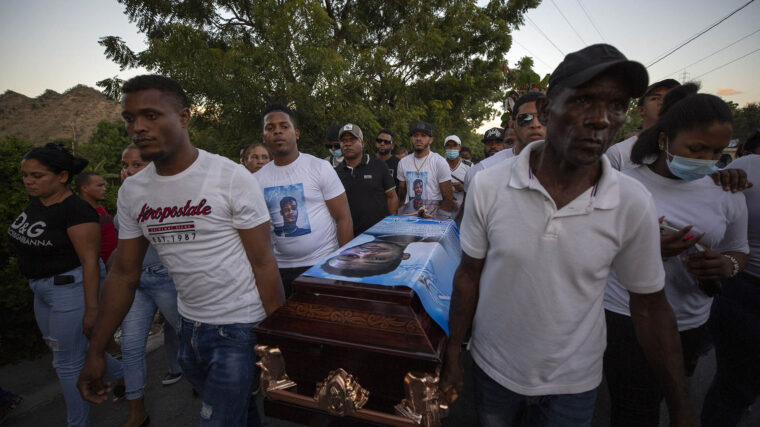
The accident could have been a turning point in curtailing migrant smuggling but has instead become yet another tragic example of systemic failures. During a press conference the day after the accident, Mexico’s then-Foreign Affairs Secretary Marcelo Ebrard, along with officials from the Dominican Republic, Ecuador, Guatemala, Honduras and the United States, announced the creation of a Grupo de Acción Inmediata, or Immediate Action Group, to investigate what happened to Martínez Castillo and his fellow travelers. The officials blamed the accident on “international human trafficking networks” and vowed to stop them. The Ministry of Foreign Affairs said it would present the “actions, progress and results” of the group’s work in a public report.
Reporters found that the group met only once in January 2022 after its inaugural session the month before, and the report promised by the ministry has never been released. The Ministry of Foreign Affairs in Mexico did not respond to requests for comments about the Immediate Action Group’s work. The U.S. Department of Homeland Security didn’t answer specific questions about the group, but a spokesperson wrote in an email that Homeland Security Investigations works with Mexico’s Transnational Criminal Investigative Unit to combat human smuggling and prosecute individuals involved in criminal activity “often resulting in disruptions of criminal enterprises.”
Although arrests for the Chiapas accident were made in the Dominican Republic and Mexico, reporters have yet to find any evidence that, nearly 2½ years later, anyone, in any country, has been convicted.
This article is part of “Cargo trucks: a trap for migrants,” a reporting collaboration led by Noticias Telemundo and the Latin American Center for Investigative Journalism (CLIP), with the International Consortium of Investigative Journalists and Bellingcat. Pie de Página, Chiapas Paralelo and En un 2×3 Tamaulipas reported in Mexico, Plaza Pública in Guatemala and Contracorriente in Honduras.
Contributors: Jesús Escudero and Delphine Reuter from ICIJ, Martha Olivia López from En un 2×3 Tamaulipas and Ángeles Mariscal from Chiapas Paralelo in Mexico, Ronny Rojas, Albinson Linares and Damià S. Bonmatí from Telemundo, Maria Teresa Ronderos and Ángela Cantador from CLIP, and Alicia Ortega Hasbun from Noticias SIN in the Dominican Republic.
